Bitwig Studio is probably my favorite DAW in the game right now, and it’s seriously underrated.
It’s not just basic software, it’s a beast when it comes to creative production, sound design, and even live performance.
The level of control it brings to the table is unmatched, hands down.
Plus, it has the ability to modulate literally everything, automate with razor-sharp precision, and deliver a versatile grid system for complex setups.
With all the new updates released in version 5.2, Bitwig has taken things to another level, and I’m breaking everything down, like:
- New sound-shaping tools ✓
- Upgraded Compressor+ features ✓
- Three new hardware-inspired EQ modules ✓
- Enhanced modulation and MSEG tools ✓
- Expanded Grid features ✓
- Improved editing workflow ✓
- Advanced performance features ✓
- Spectral FX plugins for detailed sound design ✓
- Graphics engine upgrades for smoother operation ✓
- Much more ✓
So, if you’re a producer or sound designer interested in diving into this unique DAW, you’ll know everything it offers after today.
This way, you can make the most of Bitwig Studio 5.2, improve your workflow, create epic soundscapes, and never feel limited in your creative expression again.
You won’t need a bunch of lame, lackluster YouTube tutorials 一 you’re getting the ultimate breakdown right here, right now.
Table of Contents
Bitwig Studio: Why It’s My Favorite DAW

Bitwig Studio is truly one of my favorite DAWs for music production, sound design, and live performance because, no two ways about it.
It brings some of the most impressive and versatile tools to the table, and is perfect for beat-making to advanced soundscapes, and everything in between.
Bitwig is designed for all your creative and technical needs with powerful features like:
- Multi-band compression
- Expanded modulation controls
- Precision editing
The latest update brings a host of new features that elevate the DAW’s overall performance, including better handling of tracks and improved envelopes.
Plus advanced synth functions, which I find to be out of this world.
I especially love the new tools for creating sounds, like the updated spectral FX plugins, which bring a fresh dynamic to mixing.
These Bitwig updates don’t just offer simple enhancements 一 they can reshape your music production process altogether.
In this post, I’ll break down the unique features, functions, and inclusions that make Bitwig 5.2 stand out from other DAWs software (like Ableton, Linux, FL Studio, etc.).
If you have Bitwig, go ahead and open it up and follow along, if you don’t, just enjoy the ride, as I’m sure you’ll be planning to download it after this.
New Sound-Shaping Tools in Bitwig 5.2 Update
Bitwig Studio 5.2 introduces some impressive sound-shaping tools that enhance both the creative process and overall production quality. Let’s kick things off by covering the new Compressor+ and the updated EQ modules, which are 2 epic new Bitwig updates.
- Compressor+
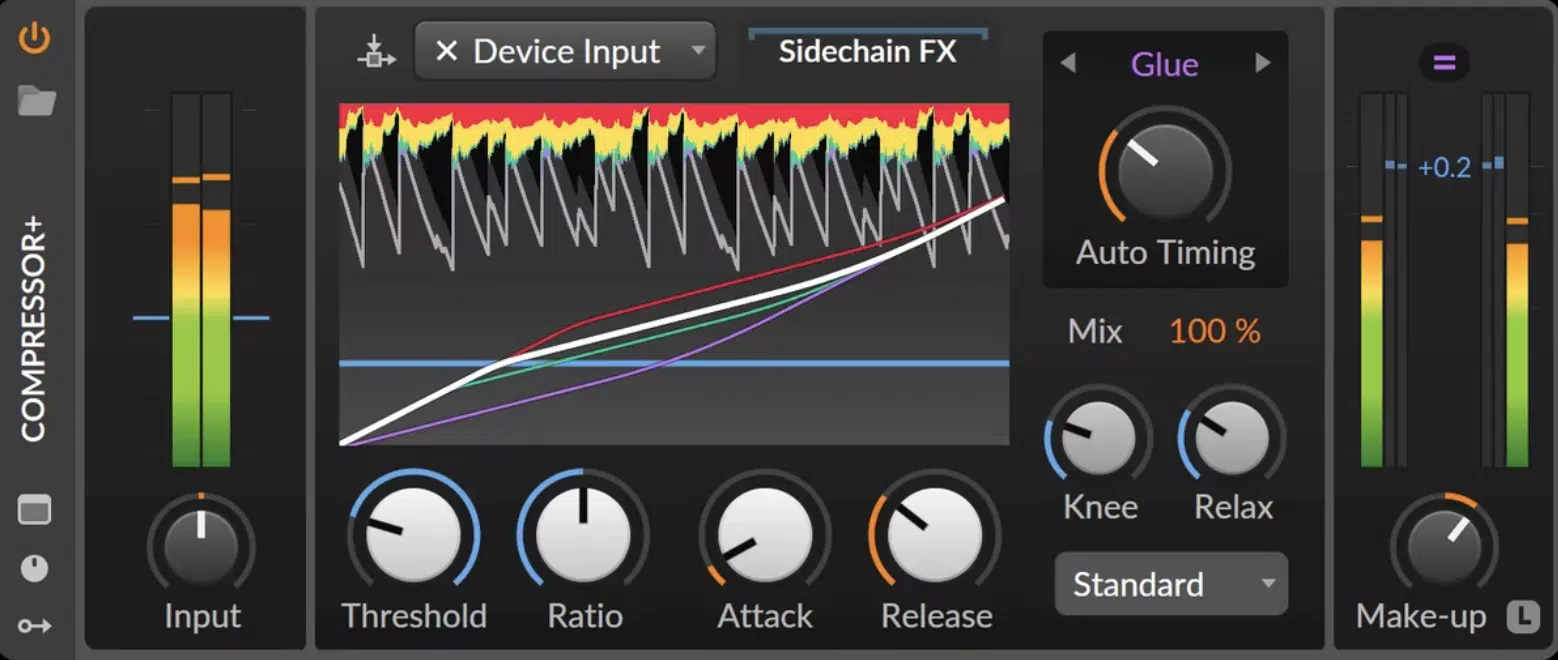
The Compressor+ in Bitwig Studio 5.2 redefines how compression works by offering 6 different compression styles and 4 frequency bands.
So, if we’re talking dynamic control, it doesn’t get much better than this.
It goes way beyond standard compression with:
- Multiband processing
- Adjustable intensity and timing
- Unique VCA color options that provide analog-style saturation
You can easily modulate each frequency band separately, with clear visual feedback that shows the gain change for each individual band.
It also includes an “Auto Timing” feature that automatically adjusts attack and release settings based on the incoming audio, which is great for maintaining dynamic balance.
I love using it to shape vocals and drums because it adds both clarity and character (enhancing my overall mix).
- EQ Modules: Focus, Sculpt, and Tilt
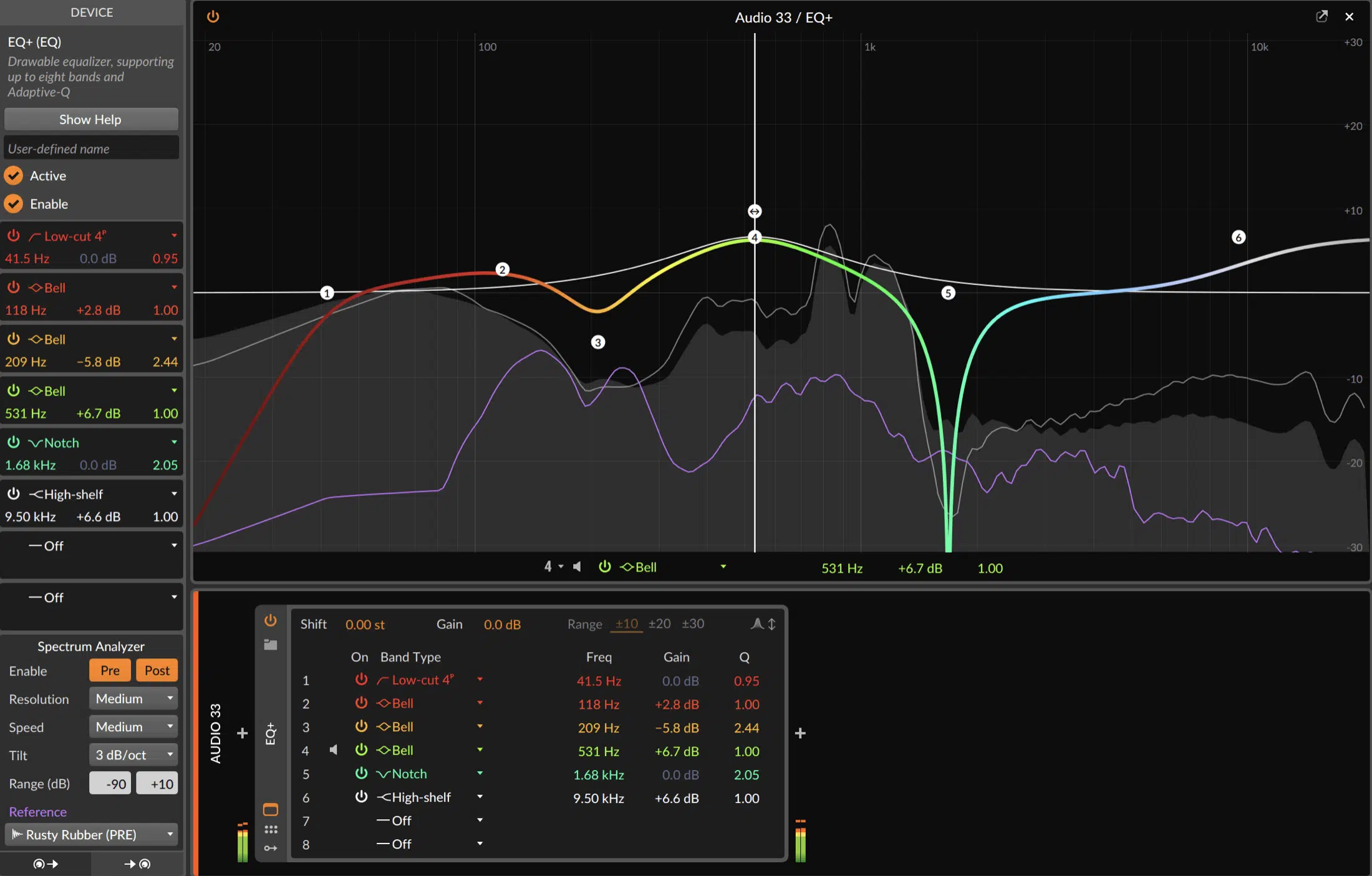
Bitwig Studio 5.2’s EQ modules are inspired by classic hardware EQs so you know you’ll get advanced control over sound sculpting.
#1. Focus
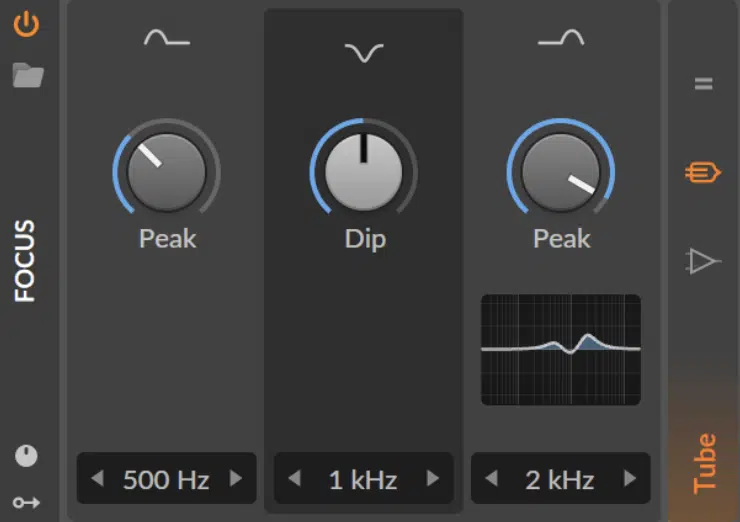
Focus, modeled after the midrange-boosting MEQ-5, is perfect for adding punch to vocals or any midrange-heavy instrument like guitars. Precise frequency targeting is the name of the game here, and it doesn’t disappoint.
#2. Sculpt
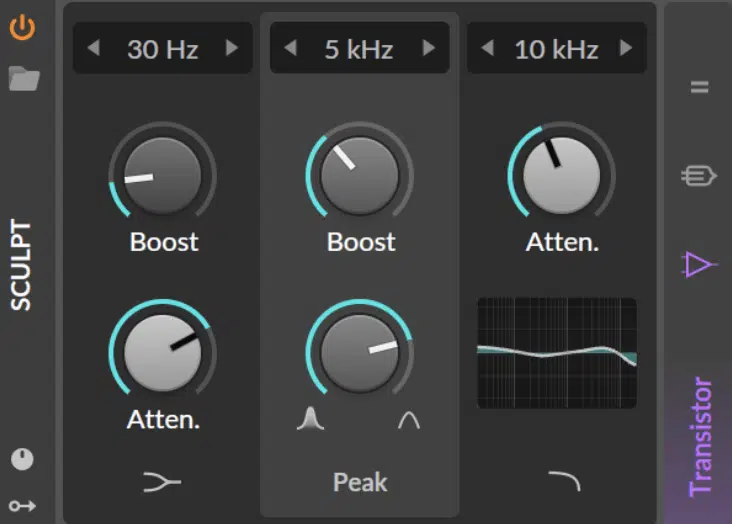
Sculpt, based on the renowned Pultec EQP-1, emphasizes low-end frequencies, ideal for enhancing bass lines and kick drums. It offers three types of saturation: Tube, Transistor, and Clean 一 letting you choose the best analog-style warmth for your mix.
#3. Tilt
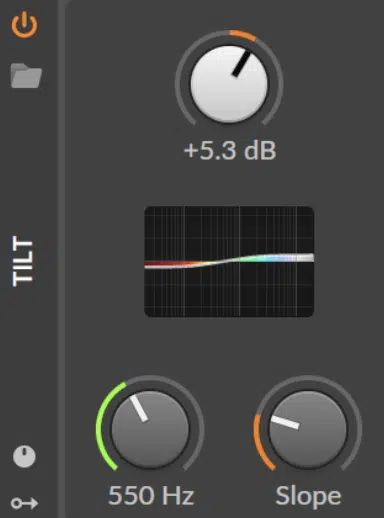
Tilt provides a simple way to adjust brightness or darkness, making it a quick fix for balancing tracks or mastering tasks.
One of my favorite aspects of these EQs is the Stereo-ize feature, which enables mid-side processing or stereo widening to create a more spacious soundstage.
This is perfect for working with complex synths or stacked instruments.
Bottom line, these EQs bring a new level of sound control to Bitwig, which makes them essential for advanced production and live performance on stage.
Enhanced Modulation and Automation Capabilities
Bitwig Studio 5.2 seriously improves modulation and automation for more creative sound design and real-time control. Next, let’s dive into the new Multisegment Envelope Generators (MSEGs) and expanded modulation features, which are key features of this Bitwig software update.
- New Multisegment Envelope Generators (MSEGs)

Bitwig 5.2 introduces five Multisegment Envelope Generators (MSEGs), which are powerful tools for creating custom modulation shapes, which are:
- Segments 一 Node-based envelope tool with looping capabilities.
- Curves 一 Acts as an LFO modulator with beat and groove sync.
- Scrawl 一 Anti-aliasing oscillator for use in The Grid and Polymer.
- Slopes 一 A pattern sequencer with stereo phase features.
- Transfer 一 A waveshaping tool for audio & signal manipulation.
These MSEGs allow you to draw unique envelopes with loops and triggers, perfect for controlling parameters like filter cutoff or pitch modulation in complex synth patches.
Each MSEG can be saved as a BWCURVE file, which makes it super simple to recall and reuse custom shapes across projects whenever you want.
One of my go-to techniques is to use MSEGs for gating effects on pads, creating rhythmic patterns that add movement to my tracks.
With over 40 modulators available in Bitwig, you can tweak various controls, including panning, sends, and mixer levels for even deeper sound manipulation (epic!).
The ability to modulate MSEG shapes within the Grid makes advanced sound design not only possible, but encouraged.
I mean, come on, if you can’t see why Bitwig is a must-use, especially for intricate modulation purposes, I don’t even know what to tell you.
- The Grid Upgrades: Breaking it Down
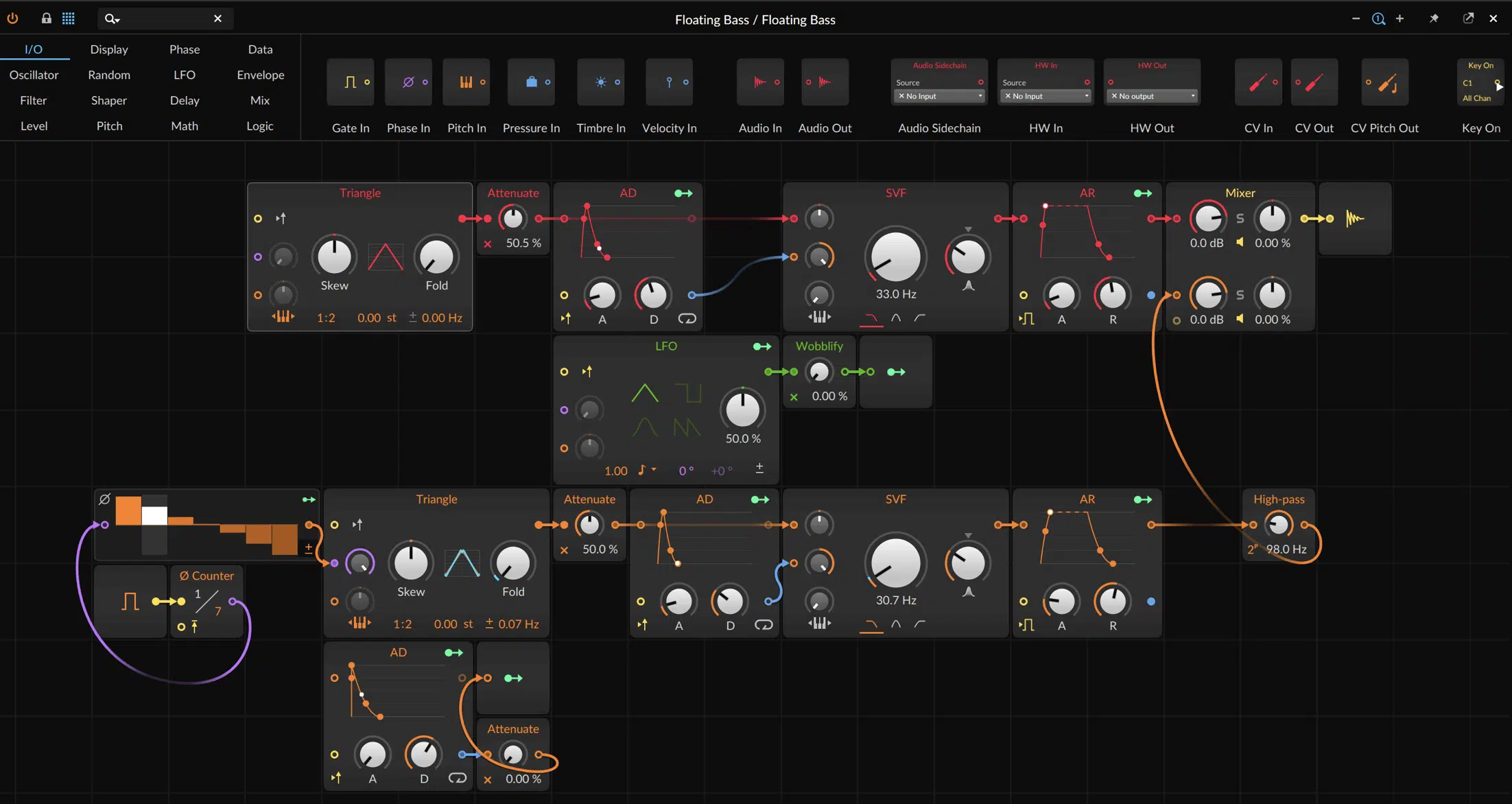
The Grid in Bitwig Studio 5.2 also got some awesome new updates, especially for sound design and synth modulation purposes.
One of the standout additions is the Crossover-2 and Crossover-3 modules, which allow for precise frequency splitting.
It’s perfect for multi-band processing in advanced synth patches.
These Bitwig modules make it easier to separate low, mid, and high frequencies 一 letting you apply different effects to each band.
It’s a great way to add depth to your basslines or create evolving textures in pads.
Another major software update that I love is the new Wavetable LFO, which offers custom LFO shapes that sync to beats or groove patterns.
I personally use it all day to modulate filters in real-time to give my synth sounds a much more intriguing and dynamic character/vibe.
The Shift Register module is another addition Bitwig included, which gets creative with programming rhythmic patterns (especially evolving arpeggios and glitch effects).
With it, you can store and shift values through a sequence, creating patterns that progress or repeat over time.
It’s perfect for building complex rhythmic sequences, evolving synth lines, or even generating unpredictable percussive loops.
It does this by controlling parameters like pitch, velocity, or filter cutoff in a unique way.
With these new modules, the Grid’s potential for complex sound design is basically endless, making this software perfect for experimental production.
As well as live performance/stage sessions, too, of course.
Improved Workflow and Editing Features
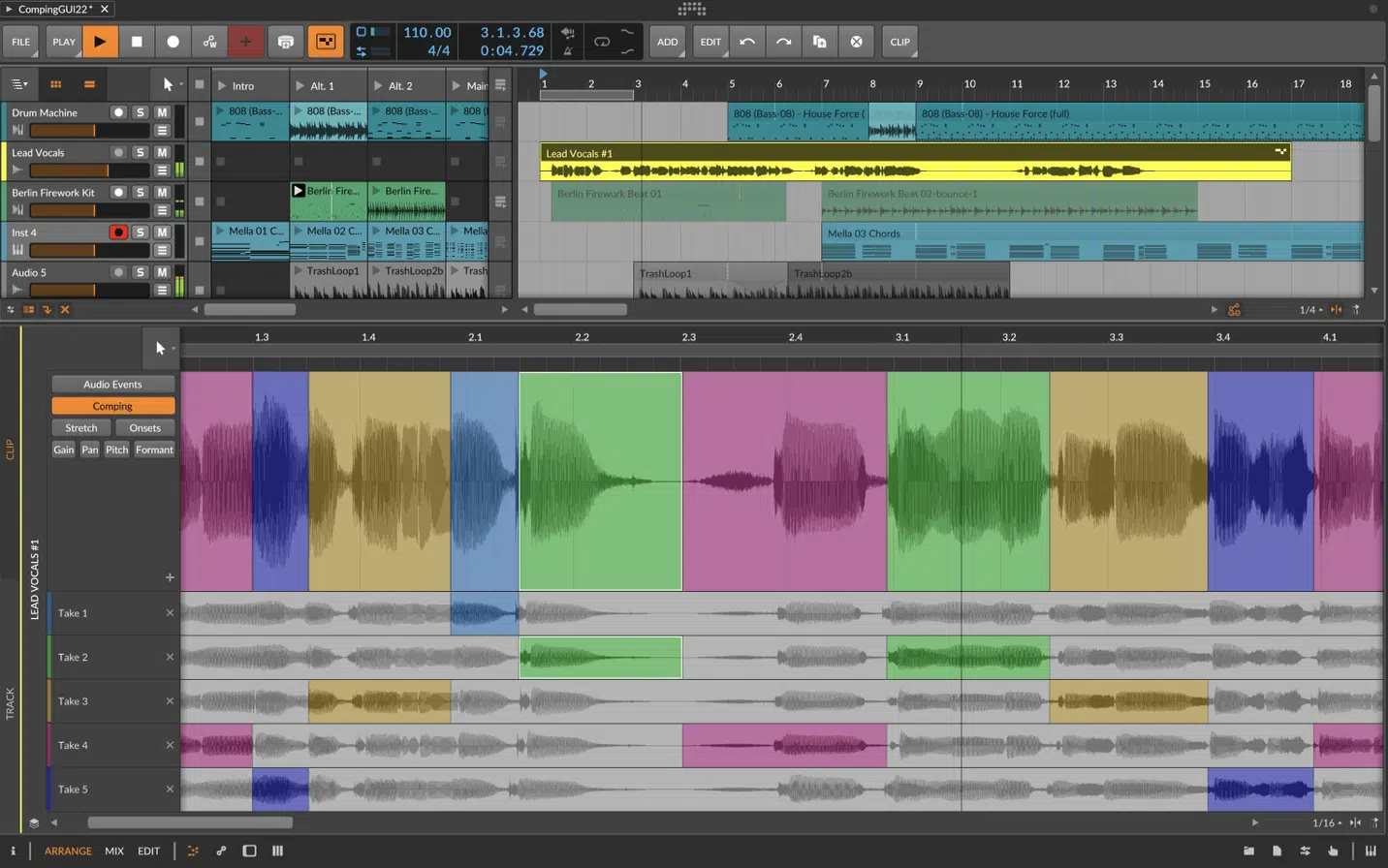
Bitwig Studio 5.2 has also made workflow improvements that enhance both the recording and editing processes as well.
Mouseless navigation is one of the best new features because it lets me move between clips, notes, and automation points using only the arrow keys.
This is super helpful during the recording process, as it lets you jump between tracks and make precise edits without needing a mouse, like, at all.
The updated software beat detection in Bitwig Studio is now more accurate too… Meaning, it’s easier to warp long audio files and sync them to your project’s tempo.
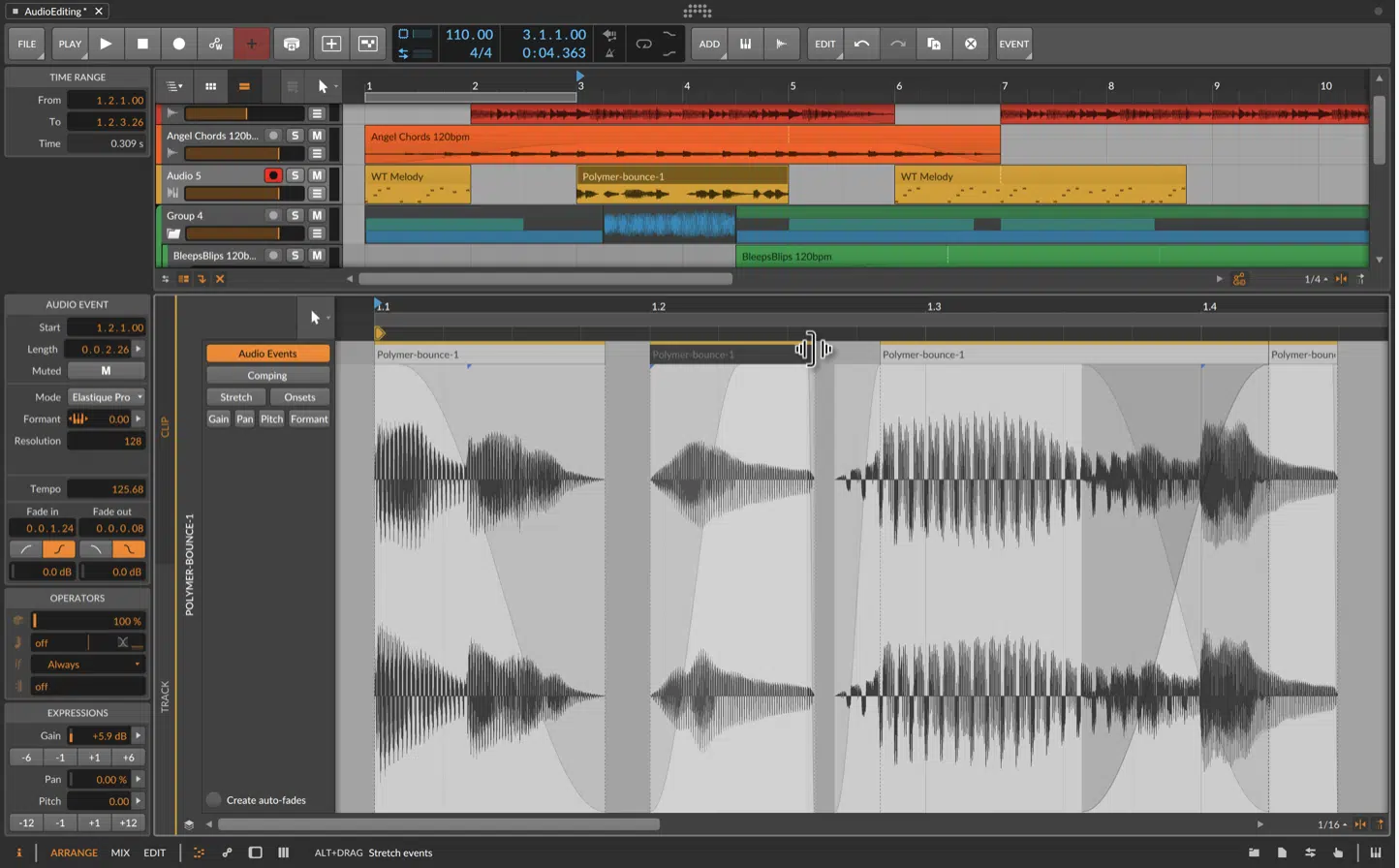
I love how Bitwig Studio adapts to the clip’s timing too, which is useful when adding vocals or live-recorded instruments to electronic tracks.
The ability to set clip start points with a simple right-click makes editing faster and more efficient than ever, and if you’re like me, every workaround is a blessing.
Combined with features like dynamic snapping for fades and transients, these software updates streamline the editing process and improve the overall production workflow.
New Effects and Performance Enhancements
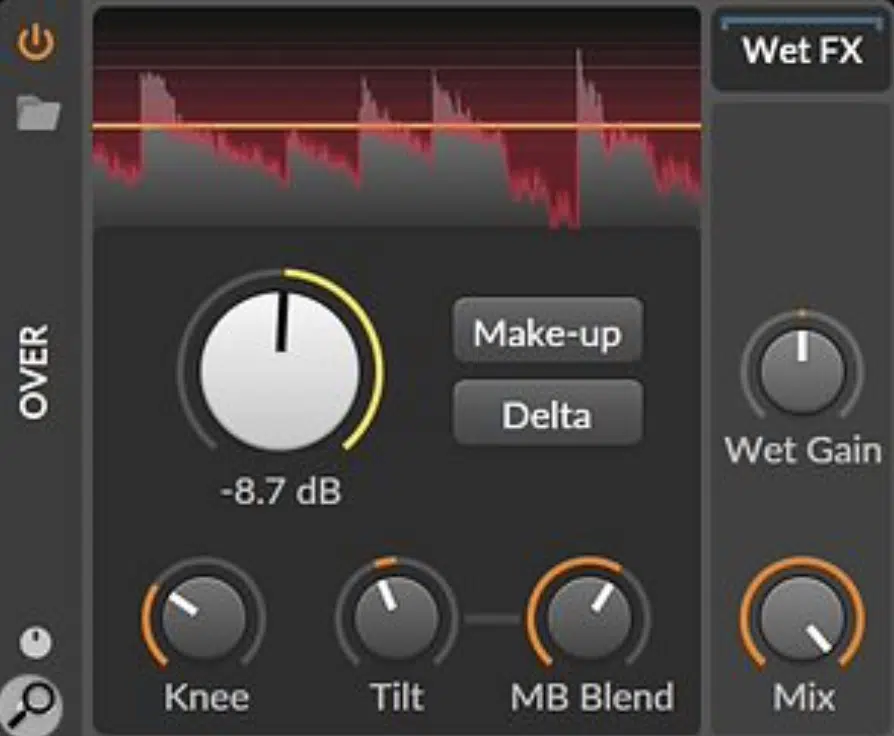
Bitwig Studio 5.2 introduces new effects like the Over (new clipper plugin shown above), which is a multi-band device with oversampling that adds warmth or distortion to your sounds.
I like to use it to add saturation to drum busses for a punchier, more aggressive sound.
The ‘Plugin Undo’ feature is another game-changer, allowing you to reverse changes made to third-party plugins, which we all use an abundance of.
It’s a lifesaver during complex mixes when fine-tuning is key (like it always is) and everything you edited is perfect.
The Chain device now includes a “Learn Wet Gain” option 一 providing better control over wet/dry mixing, which I love as well.
Other standout effects of this software update include the FX Selector’s crossfade timings, which lets you blend effects gradually.
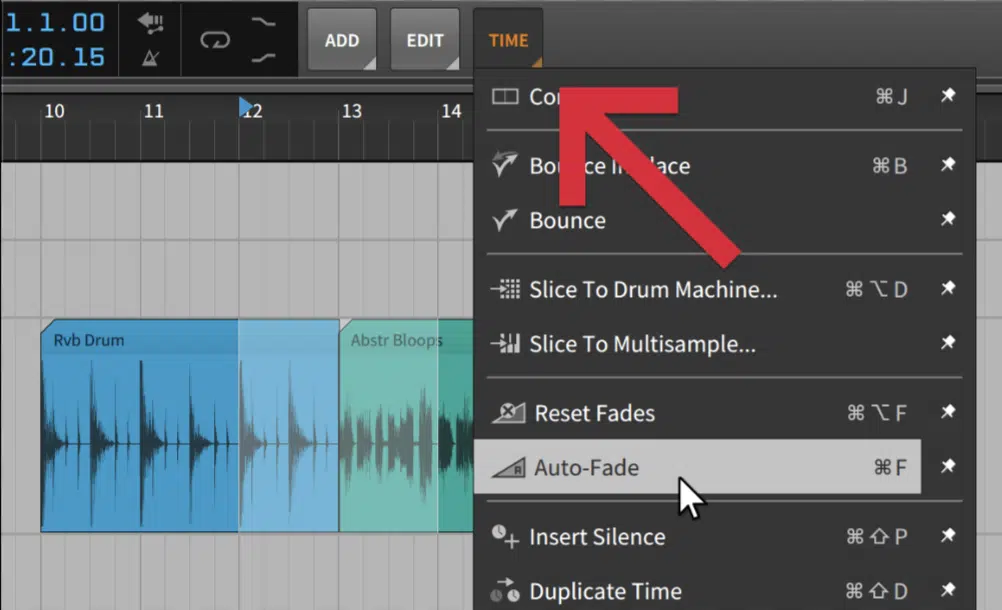
In turn, you’ll get much smoother transitions between effects, which is useful for live performance or experimental production.
It also lets you fine-tune the timing for flawless effect changes and helps with precise control over modulation chains.
You’re able to adjust the crossfade to fit the dynamics of your mix every time.
These epic Bitwig updates enhance both creativity/precision, which makes Bitwig an ideal DAW for modern music production and crazy sound design.
- Pro Tip: User Interface and Graphics Engine Upgrades
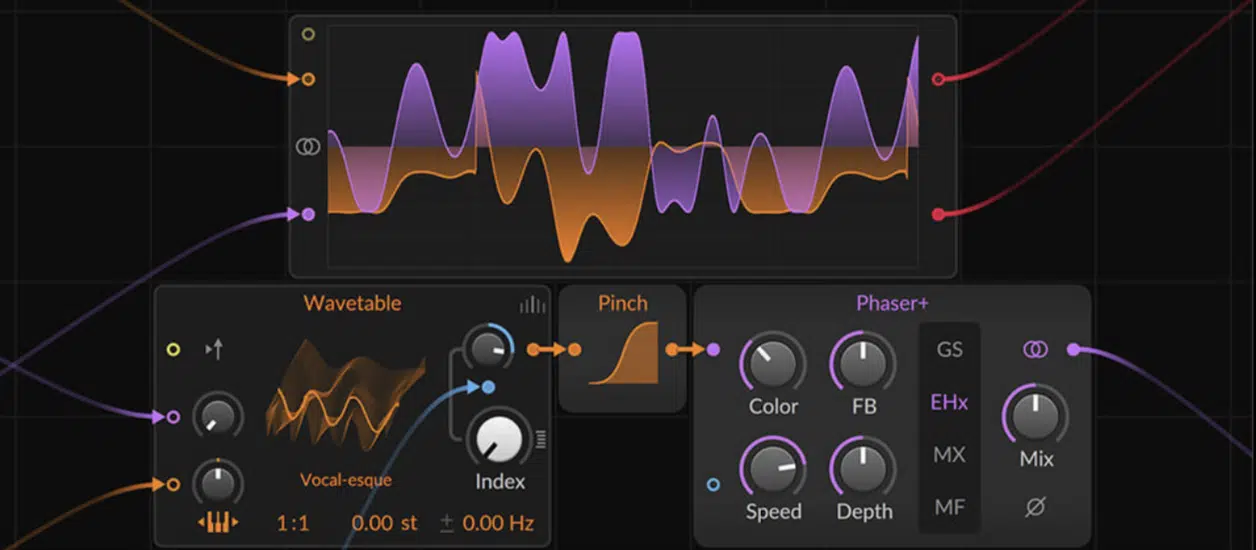
The redesigned graphics engine in Bitwig Studio 5.2 uses GPU acceleration, freeing up CPU resources for audio processing and making the interface more responsive.
This makes a huge difference when working on projects with high track counts or during quick zooming and editing.
The visual enhancements include:
- Clearer scopes
- More defined knobs
- A fresher overall appearance
It really improves my workflow efficiency with no problems or hassle.
I also love the faster response time, especially when working with automation and parameter modulation, which I work with all the time.
The upgraded UI not only looks better but also makes it easier to track changes 一 making the Bitwig interface one of the most intuitive in the game in my opinion.
It should certainly be a top software choice for producers looking for both performance and usability, regardless of whether you’re a Mac or Windows user.
Advanced Performance Features
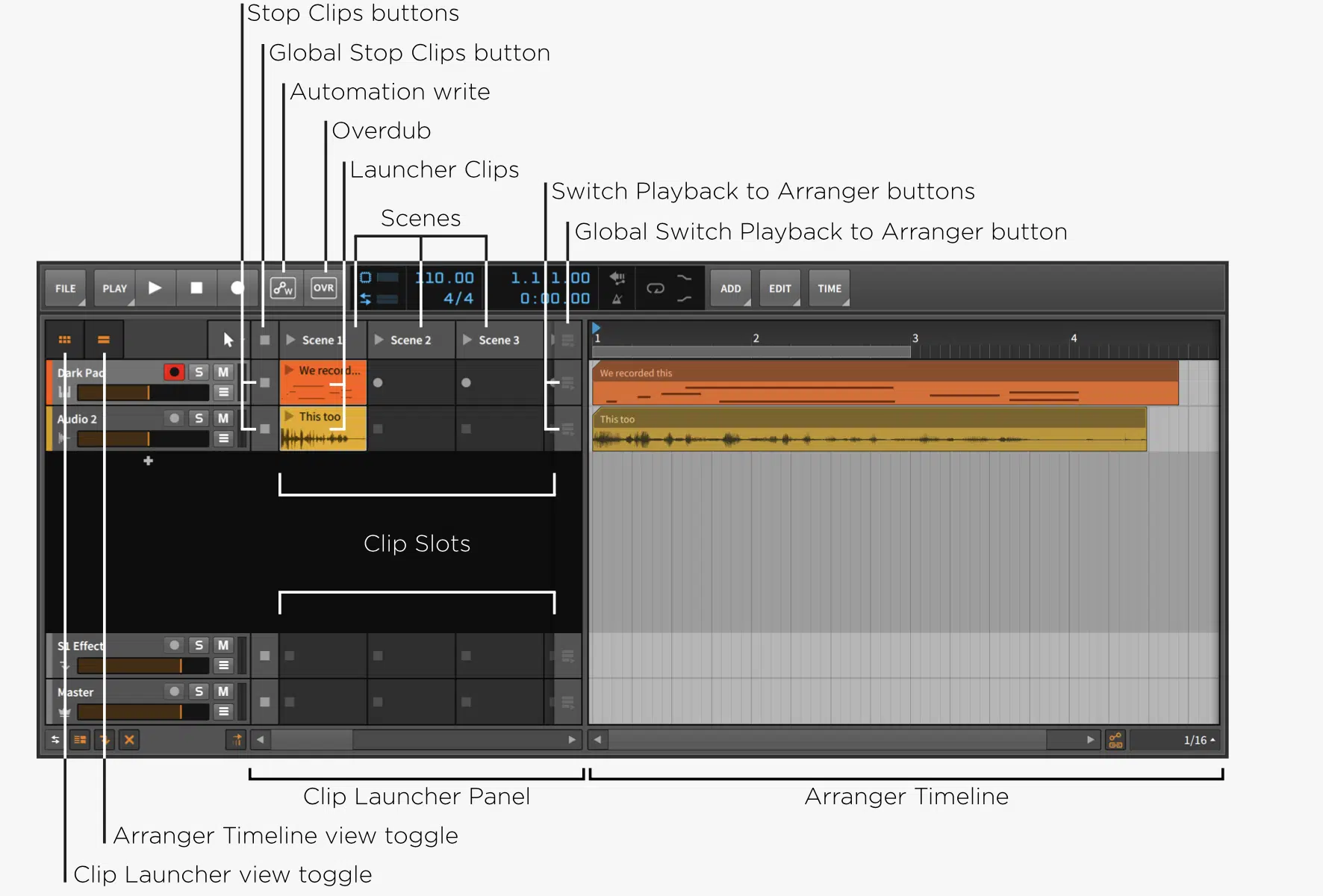
Diving back into the more advanced features of these Bitwig Studio updates, we have redefined live performance tools.
This is perfect for all of you DJs and live performers out there.
The upgraded Clip Launcher is a game-changer 一 it now allows for flawless, spontaneous transitions during sets.
You can hit a pad and have the Next Actions feature trigger the following clip just as you release it; it’s super fluid and unpredictable, I love it.
When I’m performing, using this software makes my entire set feel more alive and interactive.
With Bitwig’s software, you can customize modulation chains to adjust instrument parameters in real time, like tweaking panning or adding reverb to a synth during a set.
One of my favorite features of Bitwig is the enhanced tempo manipulation, which lets clips adapt automatically to the global tempo.
This makes it super easy to log different elements together, even if you’re mixing live-recorded loops with pre-programmed elements.
The track-level modulators are another show-stopper…
Imagine being able to alter track parameters hands-on while performing, keeping your set dynamic and engaging… Well, you got it.
PRO TIP:
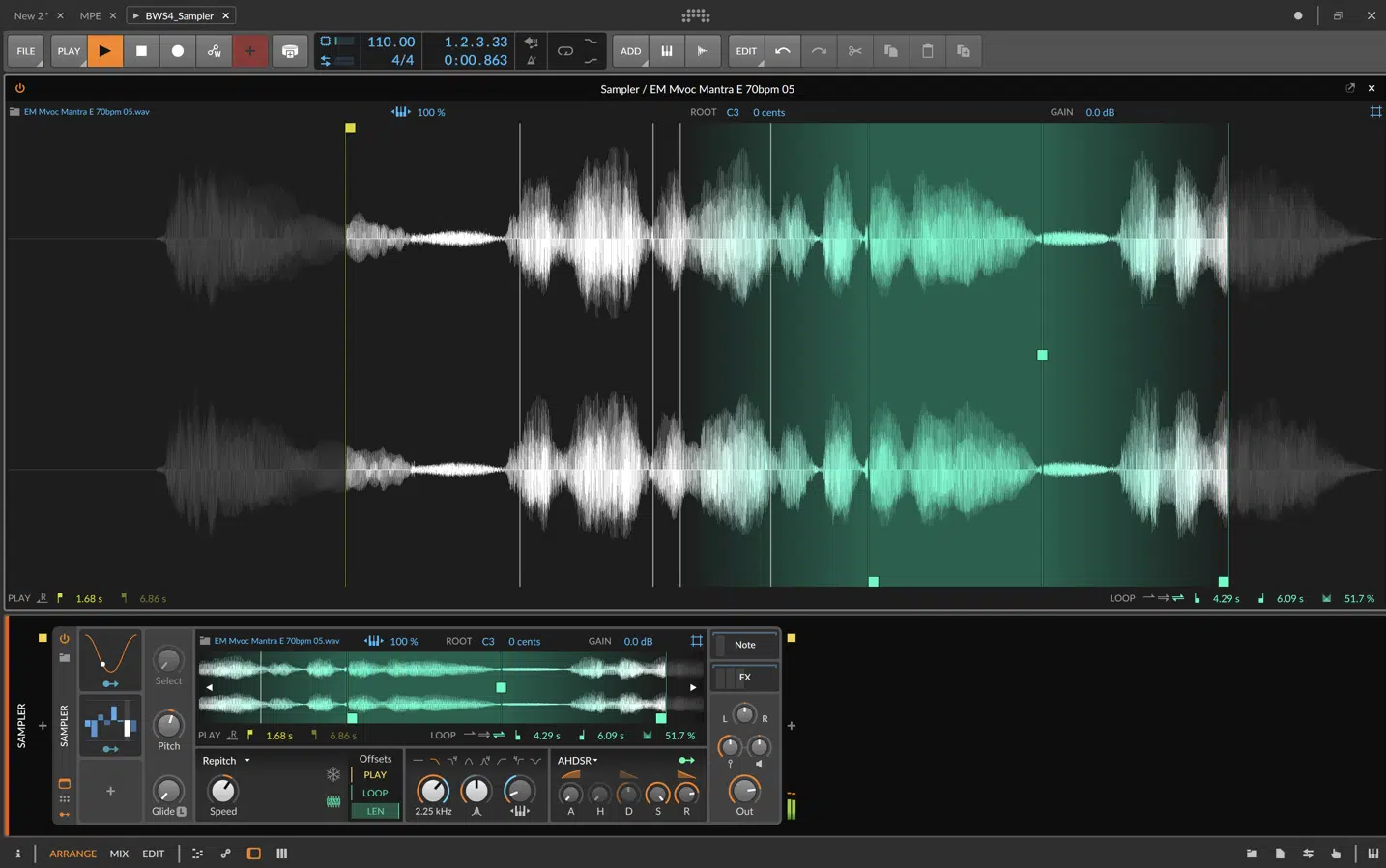
I recommend using the new Sampler features in the suite to explore different ways to blend samples into your set.
The sampler features let you modulate layers individually, adjust pitch envelopes, and manipulate start/end points to create evolving textures and rhythmic variations.
It’s all about finding your unique sound on each page of the performance with Bitwig.
Bonus: Spectral FX Plugins in Bitwig Studio 5.2
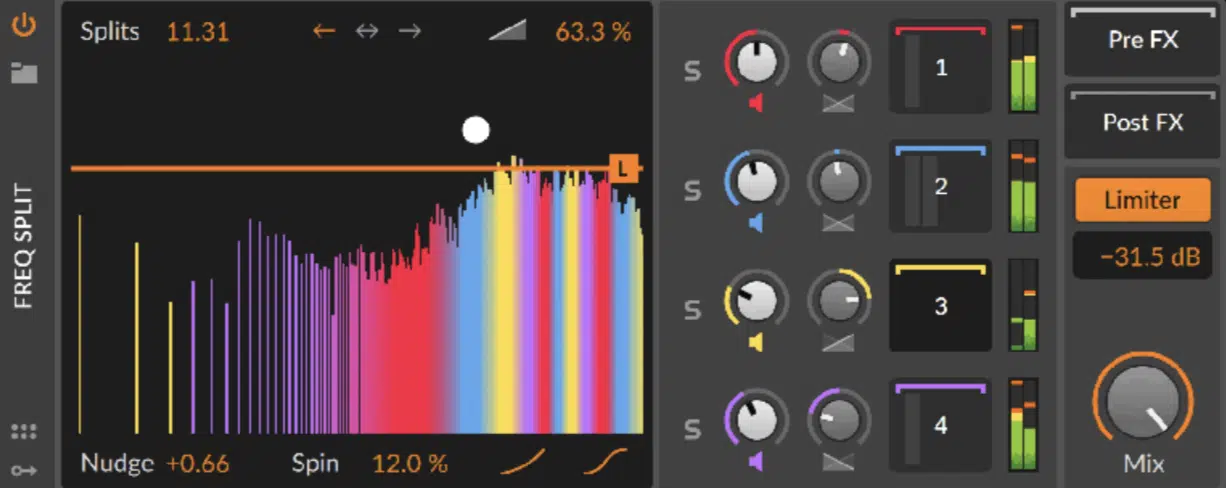
Probably the best aspects of the new Bitwig Studio software updates in my opinion is the exciting new Spectral FX plugins.
They’re perfect for frequency-based sound manipulation, which I’m all about.
These unique plugins include:
- Spectral Time
- Spectral Blur
- Spectral Freeze
Each of which provide distinct ways to affect the tonal qualities of your tracks by isolating and manipulating specific frequency bands.
For example, Spectral Time allows you to create reverbs and delays tweaked to certain frequency ranges 一 adding sick atmospheric effects to synth lines or vocals.
Spectral Blur helps build smoother transitions between different frequencies (perfect for ambient soundscapes or pads).
Lastly, Spectral Freeze lets you isolate and hold particular frequencies, which is great for adding ethereal textures or drones to a mix so your ideas don’t get left behind.
Bitwig has a lot of great production and sound design software updates this time around, but these are my favorite, for sure.
Final Thoughts
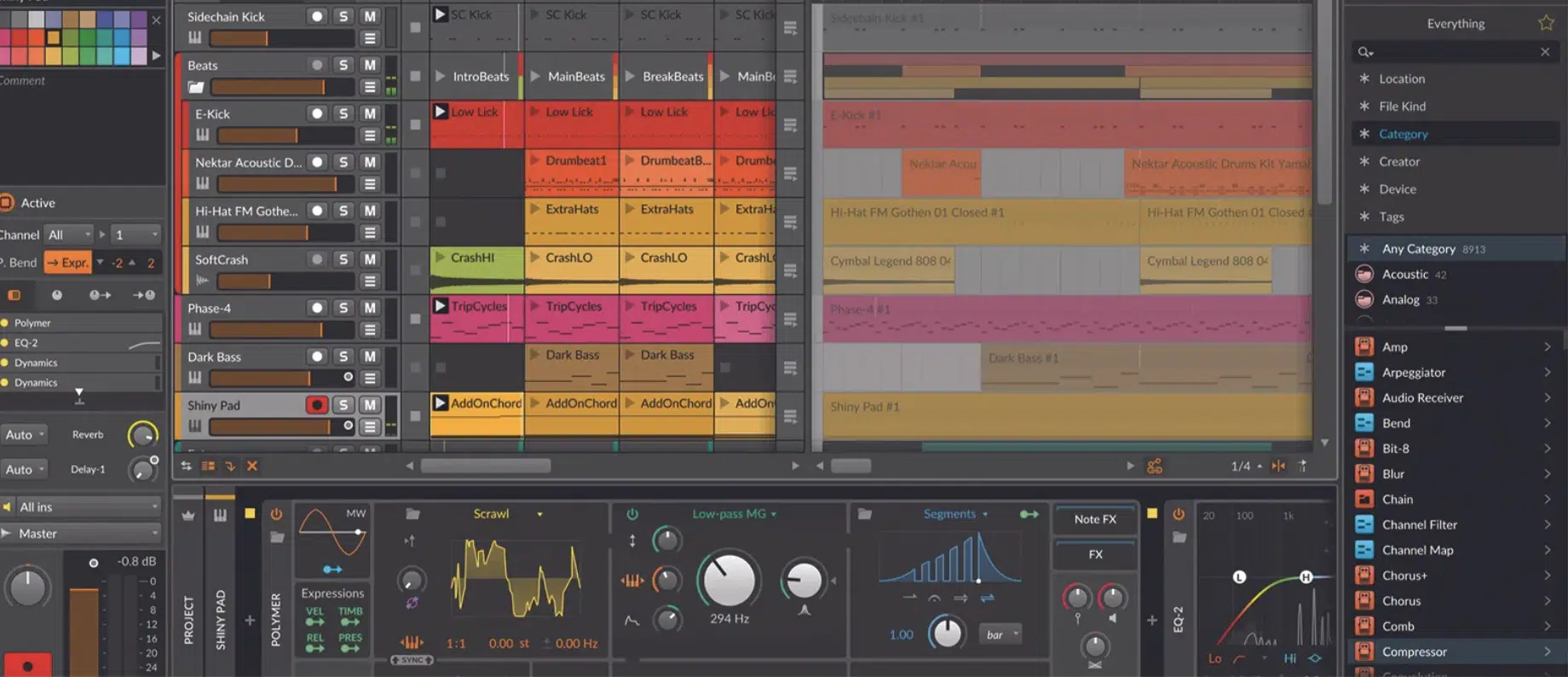
Bitwig Studio is, hands down, one of the most versatile and innovative DAWs in the game to date.
It’s honestly my favorite, even though it doesn’t get the hype it deserves.
And now, after this article, you know all about the standout features, functions, and best upgrades of them all.
I’m not trying to convert you if you already have a DAW you love and are comfortable with, whole-heartedly want you to do what feels best.
However, if you’re as passionate about advanced sound design as I am, you should seriously consider it.
As a special bonus for all my motivated producers, you’ve got to check out these absolutely epic Free Sample Packs (the best in the industry).
They include everything from drum loops and melody loops to vocal chops and 808s that can blow your socks off.
Each pack is meticulously designed by top professionals to fit a wide range of genres 一 making them invaluable tools for any producer.
Plus, they’re all 100% royalty-free, plug-and-play compatible, and offer high-quality sounds that are versatile enough to help you build chart-worthy tracks.
There are no limits to what you can create with any one of these epic options.
So, circling back, whether you’re creating cinematic soundscapes, trap beats, or electronic tracks, Bitwig Studio gives you all the tools you’ll need
Don’t be afraid to explore its full potential and see what it can do for your production process, because I promise it can take it to the next level.
Until next time…







Leave a Reply
You must belogged in to post a comment.